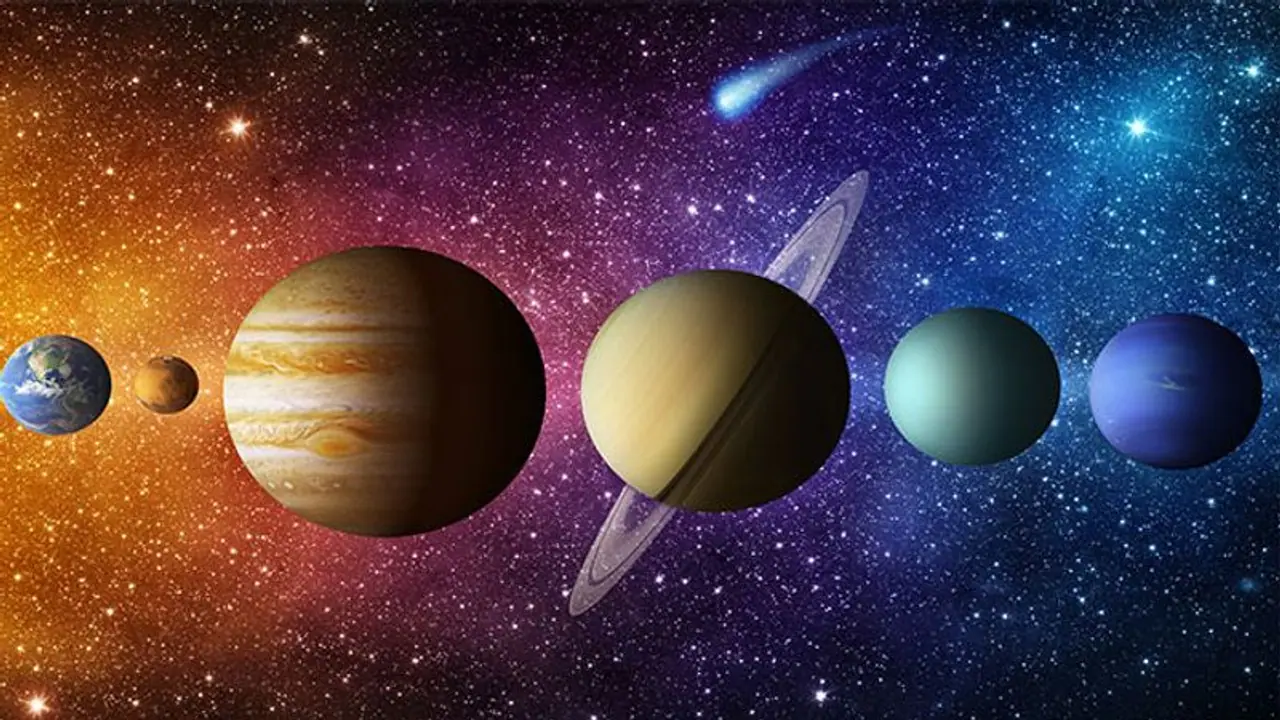Popularly known as the ‘planet parade’, the occurrence denotes an event wherein planets of the solar system line up in a row in the same area of the sky.
Skygazers are in for a treat this week as those who wish to gaze out at the pre-dawn skies, can catch a glimpse of four of the brightest planets — Venus, Mars, Saturn and Jupiter -- aligned in a row, through the naked eye.

This year, the planets will appear close in the months of April and May. As they move along in their orbits, Saturn will get further away from the others, while Jupiter and Venus will appear really close on May 1, and Jupiter and Mars will look closer on May 29.
Meanwhile, before the sunrise of April 26 and April 27, four planets -- including Venus, Mars, Jupiter and Saturn, were visible within 30 degrees from the eastern horizon in a near-perfect straight line. One could also see Jupiter, Venus, Mars and Saturn in a line without the need for binoculars or telescopes. The official said the phenomenon lit up the sky for nearly an hour.
Commenting on the solar event, Subhendu Pattnaik, Deputy Director, Pathani Samanta Planetarium said such a phenomenon was captured after 1,000 years.
Popularly known as the ‘planet parade’, the occurrence denotes an event wherein planets of the solar system line up in a row in the same area of the sky.
Subhendu Pattnaik, Deputy Director, Pathani Samanta Planetarium, Bhubaneswar said the four planets--Venus, Mars, Jupiter, and Saturn will align in a straight line, behind the moon in the eastern sky for around one hour before the sunrise during the last week of April.
“During the last week of April 2022, a rare and unique planet alignment will occur, which is popularly known as 'planet parade'. Although there is no scientific definition for 'planet parade', it is being widely used in astronomy to denote an event that takes place when planets of the solar system line up in a row in the same area of the sky,” Pattnaik said.
He further explained the three most common types of ‘planet parade’. He said when planets line up on one side of the Sun as seen up above the plane of our solar system is termed the first kind of planet parade. The alignment of three planets on one side of the Sun is very common and can be seen for many days in a year.
The four planets can be seen in the eastern sky before sunrise, from close to 4 am to before sunrise. They are bright so can also be seen in early twilight. “At this time, the planets in order of position from east to west, that is, from the horizon upwards, are Jupiter, Venus, Mars and Saturn,” explains Niruj Mohan Ramanujam, the head of the Science Communication, Public Outreach and Education (SCOPE) section of Indian Institute of Astrophysics, Bengaluru.
The four planets appear in a line at this moment in the morning, and as they move in their orbits, some of them can get quite close to one another in the sky. However, this is just an apparent alignment as seen from our perspective on Earth. The actual distances between them are still vast. “This is an excellent occasion for all of us to visually track the positions of these fast-moving planets every day, and appreciate the motivation of all ancient cultures to understand and predict their paths in the sky,” said Dr. Ramanujam.
